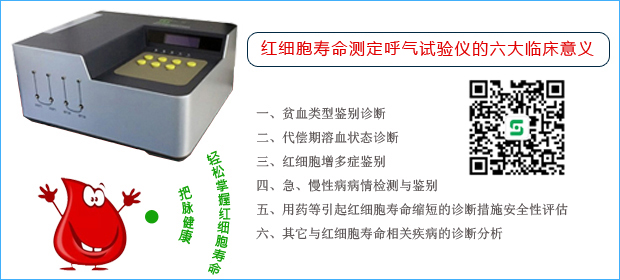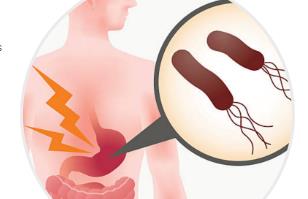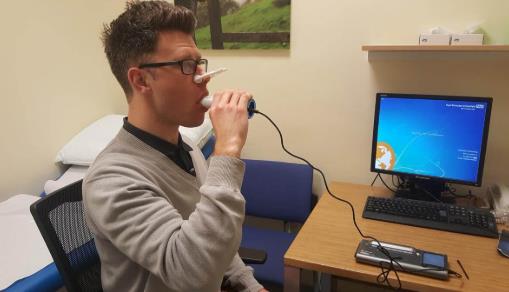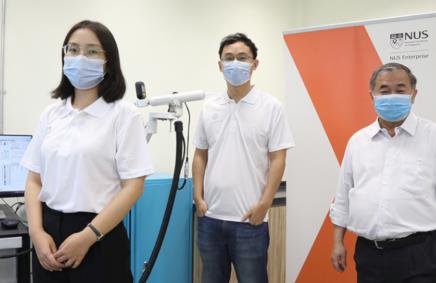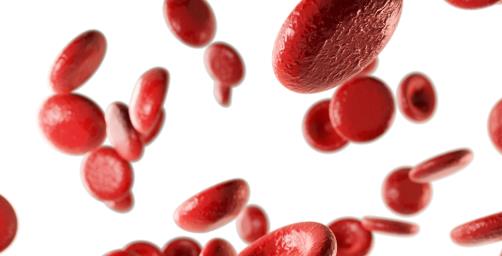

-
- 01 | Urea Breath Test General Information The C14 Urea Breath ..
- 02 | Spirometry and bronchodilator What is spirometry? LYL Spirometry test ..
- 03 | Gemelli Biotech Launches Novel LOS ANGELES RALEIGH, N.C.--(BUSINESS WIR..
- 04 | Cancer Clues in the Breath: Te A simple breath test can detect changes ..
- 05 | 新冠疫情背景下,器械医药公司面 2020 年,新冠疫情席卷全球,给整个社会带..
- 06 | NUS spin-off company develops Founded in Singapore in September 2019, ..
-
- 01 | Spirometry and bronchodilator What is spirometry? LYL Spirometry test ..
- 02 | 新冠疫情背景下,器械医药公司面 2020 年,新冠疫情席卷全球,给整个社会带..
- 03 | Urea Breath Test General Information The C14 Urea Breath ..
- 04 | Gemelli Biotech Launches Novel LOS ANGELES RALEIGH, N.C.--(BUSINESS WIR..
- 05 | Cancer Clues in the Breath: Te A simple breath test can detect changes ..
热点推荐
- 01 | 中科院无创筛查获新突破!做个深 食管癌是一种常见的恶性肿瘤,在全球范围内..
- 02 | 先亚集团研发的高新科技产品红细 一、概述 通过呼气测定来进行人体红细胞寿..
- 03 | Capnia Inc公司研发的便携式呼气 美国Capnia Inc公司研发了一款便携式呼气末..
- 04 | 以色列新型仪器用呼气成分诊断疾 我们身体“运行”的过程中会产生许多代谢物..
Spirometry and bronchodilator responsiveness testing
What is spirometry?
LYL Spirometry test
Spirometry measures the amount of air you can breathe out from your lungs and how fast you can blow it out. You’ll be asked to take a very deep breath and blow out as fast as you can into a mouthpiece, until no more air comes out.
A spirometry test typically takes 10 to 20 minutes, but may be longer if it includes bronchodilator responsiveness testing.
Types of spirometer
There are various different spirometer devices, but they all measure the same thing.
Many GP surgeries now have small, portable spirometers.
Some spirometers are more sophisticated and can give more detailed results. These are used in a hospital or clinic.
Man breathing into a sophisticated spirometer
Breathing into a sophisticated spirometer
What is bronchodilator responsiveness testing?
Bronchodilator responsiveness testing is done to see if your lung function gets better with medication, and if so, by how much. It’s sometimes called reversibility testing. In bronchodilator responsiveness testing, the spirometry test is done before and after you breathe in some medication.
What’s spirometry used for?
Spirometry can help tell if your breathing is affected by narrowed or inflamed airways. The results are useful in diagnosing lung conditions such as COPD and asthma. For some conditions, it can be used to grade how severe your condition is.
How should I prepare for a spirometry test?
You’ll be told if there are any particular things you need to do to prepare. You may need to stop taking bronchodilator medication before the test. You should also stop smoking for 24 hours beforehand, if you can.
On the day of your spirometry test, it’s a good idea to wear loose, comfortable clothing.
Am I fit to do the test?
Spirometry is usually safe, but there are some conditions where it may cause problems. Tell your healthcare professional if any of these apply to you:
angina
heart problems
recent concussion
uncontrolled high or low blood pressure
pulmonary hypertension
pulmonary embolism
pneumothorax
recent surgery on the brain, middle ear, sinuses, eyes, chest or abdomen
late term pregnancy
aneurysms
They will often have a checklist to ask you about these. If in doubt, talk to your health care professional.
What happens during the test?
You will be asked some questions before you start, to check you are medically fit to do the test. It is important to put as much effort into the test as you can, so the results are accurate.
You’ll be asked to sit comfortably and may have a clip put on your nose to make sure all the air goes into the mouthpiece. You will be shown how to blow into the spirometer before starting. You may be asked to blow 3 or more times into the spirometer, to check the readings are similar each time.
Normally, you will first be asked to breathe in deeply and out gently. Once your health care professional is happy with the results, you will move on to the next part of the test. You will have to breathe in again deeply, this time quite fast, and then breathe out as fast and as hard as you can until your lungs are empty.
Your health care professional may ask you to use your inhaler or other medication, wait 15–20 minutes and then repeat the test. For some drugs the wait may be 45 minutes between tests. This is called a bronchodilator responsiveness test or reversibility test and it’s done to see if the medication improves your breathing. If you use inhalers, you should bring them to your appointment.
Occasionally, people feel a little light-headed and dizzy following the test. This usually lasts only a few moments. Let the person performing the test know, to make sure that you have time to recover.
What will the results look like?
Spirometry usually measures:
how much air you can blow out in a relaxed manner, like a gentle sigh out, until your lungs are completely empty. This is called your slow vital capacity or VC
the amount of air you can blow out in one second. With healthy lungs and airways, you can normally blow out most of the air from your lungs in one second. This is called your forced expiratory volume in one second, or FEV1
the total amount of air you can blow out in one complete breath after taking a deep breath in. You will be asked to blow out as hard and as fast as you can until your lungs are completely empty. This is called your forced vital capacity or FVC
Your health care professional will look at how much air you can blow out in the first second (FEV1) and compare this to the total amount (FVC). This will give a percentage of air you can blow out in the first second.
Your results will look different depending on the type of spirometer used. Normally, your health care professional will compare your measurements with the normal range of values. The curves drawn by the spirometer showing the pattern of airflow are also important to help understand your results.
